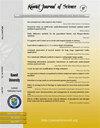应用扫描电镜研究夹竹桃科和麻瓜亚科乳汁管种子微形态特征
IF 1.1
4区 综合性期刊
Q3 MULTIDISCIPLINARY SCIENCES
引用次数: 0
摘要
对种子收集性状变异的了解有助于了解遗传变异和植物保护知识。本研究对夹竹桃科和麻瓜亚科的12种种子进行了宏显微形态鉴定。采用扫描电子显微镜(SEM)对种子表面纹理、尺寸、种子形状和雕刻、种子翅表面细胞、彗发位置、水平和颜色、种脐位置和形状进行了观察。这是巴基斯坦首次报道昏迷表面雕刻的研究。两科所选种种子的定性和定量特征都发生了变化。种子的形状是椭圆形和扁平的。种皮表面有八种类型(网状-规则、网状-不规则、规则-褶皱、针状、乳头状、网状、反刍和条纹),九种类型的种子翼雕刻,四种类型的种脐表面细胞从网状到条纹不等。最大数量的种子表面呈螺旋状至波状的毛状背斜壁纹饰。周壁从光滑到疣状不等。利用种子的形态特征,建立了正确识别乳系分类群的分类钥匙。研究物种之间的差异说明了扫描电镜作为一种有益的工具的重要性,它可以激活哺乳类群种子中隐藏的微形态特征,最终有助于种子在未来的准确识别、划分、分类和探索。乳汁管的特征有助于理解家族内部的一般关系。本文章由计算机程序翻译,如有差异,请以英文原文为准。
Application of scanning electron microscopy unraveling seed micromorphological characteristics in laticifers of family Apocynaceae and subfamily Asclepiadoideae
The understanding of trait variation within the seed collection provides an understanding of genetic variation and knowledge about plant conservation. In this study, twelve species of the lactiferous family Apocynaceae and subfamily Asclepiadoideae have been evaluated for seed macro-micromorphological characterization. Seed surface texture, dimension, seed shape and sculpture, seed wing surface cell, coma position, level and color, hilum position and shape were examined by using a scanning electron microscope (SEM). This is the first study reporting coma surface sculpturing in Pakistan. Qualitative and quantitative features of seeds exhibited alteration among selected species of both families. The seed shapes were found oblong and flattened. Eight types of seed coat surface (reticulate-regular, reticulate-irregular, regular-rugose, aculeate, papillate, reticulate, ruminate, and striate), nine types of seed wing sculpturing, and four types of hilum surface cells that varied from reticulate to striate were observed. The maximum number of seed surfaces exhibited spiral to undulate hairy anticlinal wall ornamentation. The periclinal wall varied from smooth to warty. A taxonomic key was developed using seed morphological characters for the correct identification of lactiferous taxa. The variations among the studied species described the significance of SEM as a beneficial tool to vitalize the hidden micromorphological features among seeds of lactiferous taxa that eventually aid in seeds' accurate identification, delimitation, classification, and exploration in the future. Laticifer features are useful to understand the generic relationships within the family.
求助全文
通过发布文献求助,成功后即可免费获取论文全文。
去求助
来源期刊

Kuwait Journal of Science
MULTIDISCIPLINARY SCIENCES-
CiteScore
1.60
自引率
28.60%
发文量
132
期刊介绍:
Kuwait Journal of Science (KJS) is indexed and abstracted by major publishing houses such as Chemical Abstract, Science Citation Index, Current contents, Mathematics Abstract, Micribiological Abstracts etc. KJS publishes peer-review articles in various fields of Science including Mathematics, Computer Science, Physics, Statistics, Biology, Chemistry and Earth & Environmental Sciences. In addition, it also aims to bring the results of scientific research carried out under a variety of intellectual traditions and organizations to the attention of specialized scholarly readership. As such, the publisher expects the submission of original manuscripts which contain analysis and solutions about important theoretical, empirical and normative issues.
 求助内容:
求助内容: 应助结果提醒方式:
应助结果提醒方式:


